In today’s digital music landscape, having one of the best audio interfaces is essential for any musician or producer working in the box.
Solo musicians might find a single-input interface sufficient, especially when working with soft synths and samples. The audio interfaces offer a balance of quality, functionality, and affordability.
Understanding your specific needs is crucial in choosing the right interface. Beginners should explore buying guides and reviews to understand what makes an interface stand out in terms of quality and features.
Remember, the audio interfaces are not just about the number of inputs and outputs. They’re also about reliability, sound quality, and how they fit into your overall workflow.
Our Top Picks
We provide our product links with Amazon assurance whenever possible.
Best Overall: Universal Audio Apollo Twin X
Among the audio interfaces, the Universal Audio Apollo Twin X stands out as a top-tier choice for musicians and producers. This interface is renowned for its elite-class A/D and D/A conversion.
It brings studio-quality recording right to your desktop. Its sleek design and powerful features make it a go-to for those seeking professional-grade audio in a compact package.
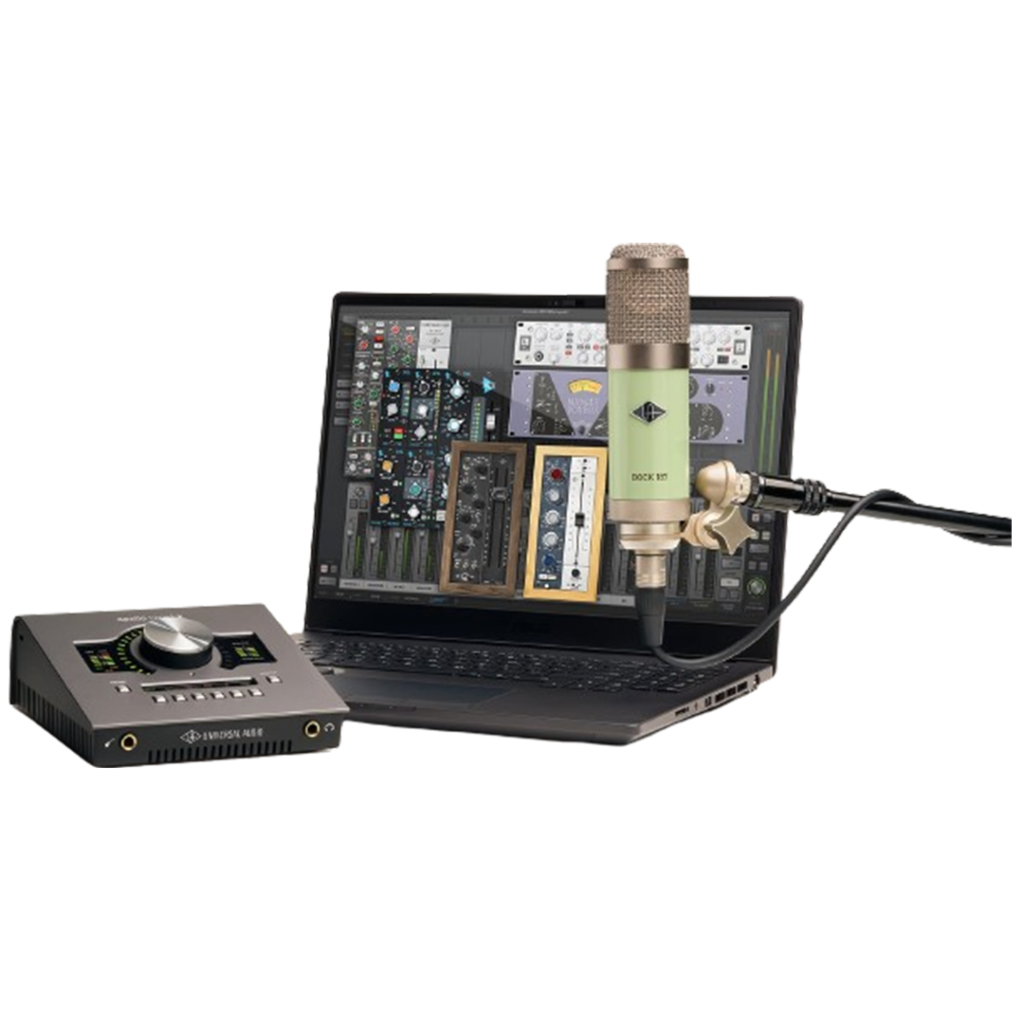

Specifications:
- Connectivity: Thunderbolt 3
- Audio Resolution: 24-bit/192kHz
- Analog Inputs: 2 (Combo XLR-1/4″ TRS Balanced/Unbalanced)
- Analog Outputs: 6
- Digital I/O: 8 Inputs at 48 kHz, 4 Inputs at 96 kHz, 2 Inputs at 192 kHz
- Microphone Preamps: 2 Unison-enabled
- DSP Processing: UAD-2 DUO Core
- Maximum Output Level: Line/Monitor Outputs 20.2 dBu
Who Is It For?
The Universal Audio Apollo Twin X is an ideal choice for musicians, producers, and audio engineers. It offers superior sound quality and versatility in a compact form. This interface is perfect for home studios.
It’s a powerhouse for recording vocals, guitars, and other instruments with its Unison-enabled preamps. The preamps ensure rich, analog-sounding tracks.
Its high-resolution audio capability (24-bit/192kHz) makes it a top pick for those who prioritize audio fidelity. The Apollo Twin X is especially suited for those who work within the Thunderbolt 3 ecosystem.
The Apollo Twin X offers the perfect blend of quality, functionality, and portability. Whether you’re a solo artist, part of a band, or a producer mixing tracks, it’s one of the audio interfaces on the market today.
Best Budget: Audient iD4 MkII
Among the audio interfaces for budget-conscious musicians and producers, the Audient iD4 MkII stands out. This compact, yet powerful interface delivers professional-grade audio quality in a user-friendly package.
This microphone is great for home studios. It’s perfect for people who are just starting out in music or want an affordable upgrade.
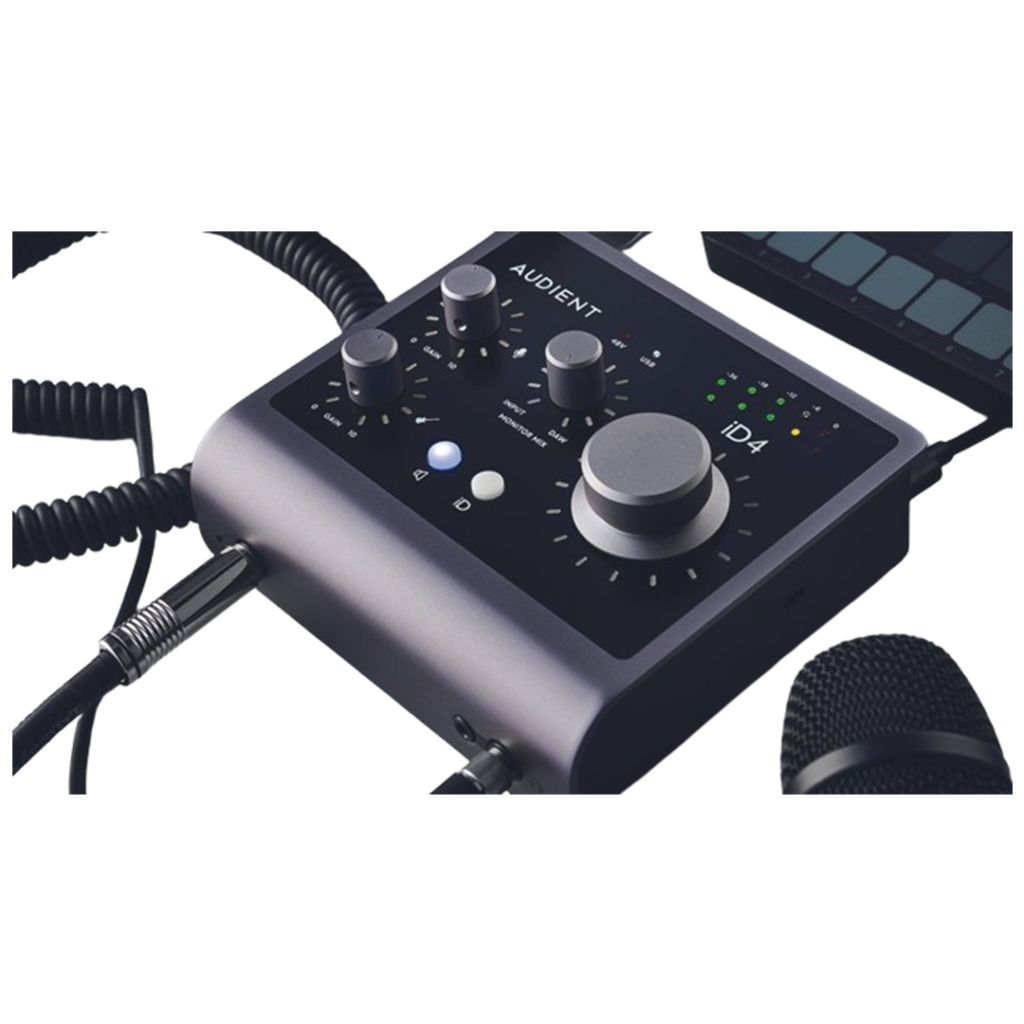

Specifications:
- Audio Resolution: 24-bit/96kHz
- Dynamic Range: 120dB A-Weighted
- Frequency Response: ±0.5dB 10Hz to 40kHz
- Microphone Preamp Gain Range: 58dB
- Input Impedance: 2.8k (Mic), >8k (Line)
- Phantom Power: 48V ±4V @ 10mA/Channel
- Maximum Input Level: 12dBu (Mic), 21dBu (Line)
Who Is It For?
The Audient iD4 MkII is an ideal choice for solo artists, podcasters, and home studio enthusiasts. It is one of the audio interfaces that combines affordability with professional quality.
Its high-quality preamps ensure crystal-clear recording of vocals and instruments. This makes it perfect for singer-songwriters and acoustic performers.
The compact and portable design appeals to musicians on the go, while its USB-C connectivity ensures compatibility with modern laptops and desktops. However, it may not suit those requiring multiple inputs or advanced connectivity like MIDI I/O or Thunderbolt.
Yet, its simplicity and quality make it a top choice for beginners and intermediate users. They seek a reliable, high-quality audio interface without breaking the bank.
Best Compact: Audient EVO 4 interface
Among the audio interfaces, the Audient EVO 4 stands out for its compact design and exceptional quality. This interface is tailored for the modern musician.
It combines simplicity with powerful features, making it an ideal choice for home studios and on-the-go recording. Its user-friendly nature appeals to both beginners and seasoned artists, ensuring a seamless recording experience.
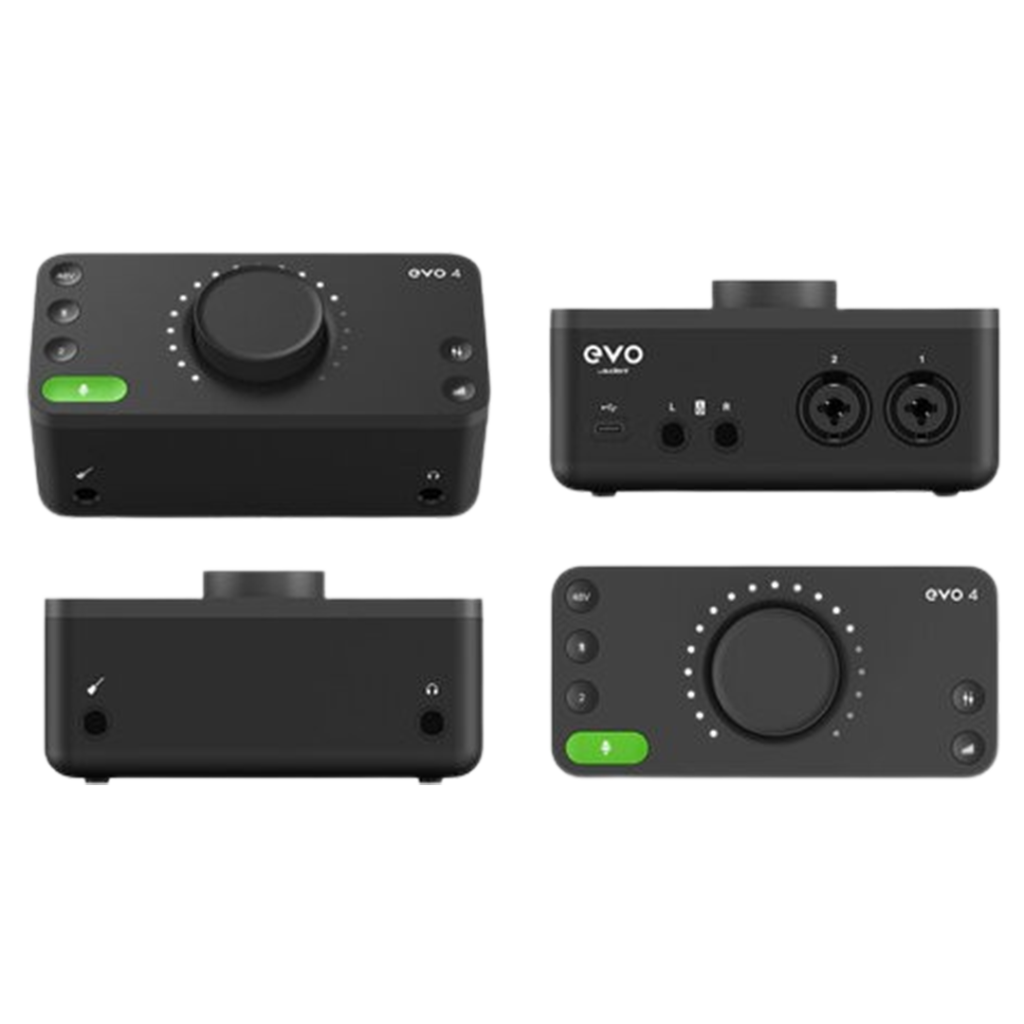

Specifications:
- Mic Preamp Gain Range: 58dB
- Phantom Power: 48V
- Frequency Response: +/-0.5dB 10Hz to 40kHz
- Dynamic Range: 113dB A-weighted
- Inputs: 2 Analogue
- Outputs: 2 Analogue
- Connectivity: USB Type-C
- Weight: 360g
Who Is It For?
The Audient EVO 4 is a perfect match for musicians and podcasters who prioritize portability and ease of use without compromising on quality. It’s one of the audio interfaces for those who are just stepping into the world of digital recording.
It’s also great for professionals seeking a compact, reliable solution for travel. The high-quality preamps ensure crystal-clear recording of vocals and instruments. This makes it ideal for singer-songwriters, podcasters, and home studio enthusiasts.
Its simplicity does not intimidate beginners. Its quality satisfies the demands of experienced users.
Whether you’re recording demos, podcasts, or working on a music project, the EVO 4 offers a blend of quality and convenience that’s hard to beat.
Best For Monitoring: SSL2+ audio interface
Among the audio interfaces, the SSL2+ stands out as a top choice for those seeking professional-grade monitoring capabilities. This interface brings the legendary SSL sound into your home studio.
It offers pristine audio quality and versatile features. Its user-friendly design and robust build make it an attractive option for both beginners and seasoned professionals.
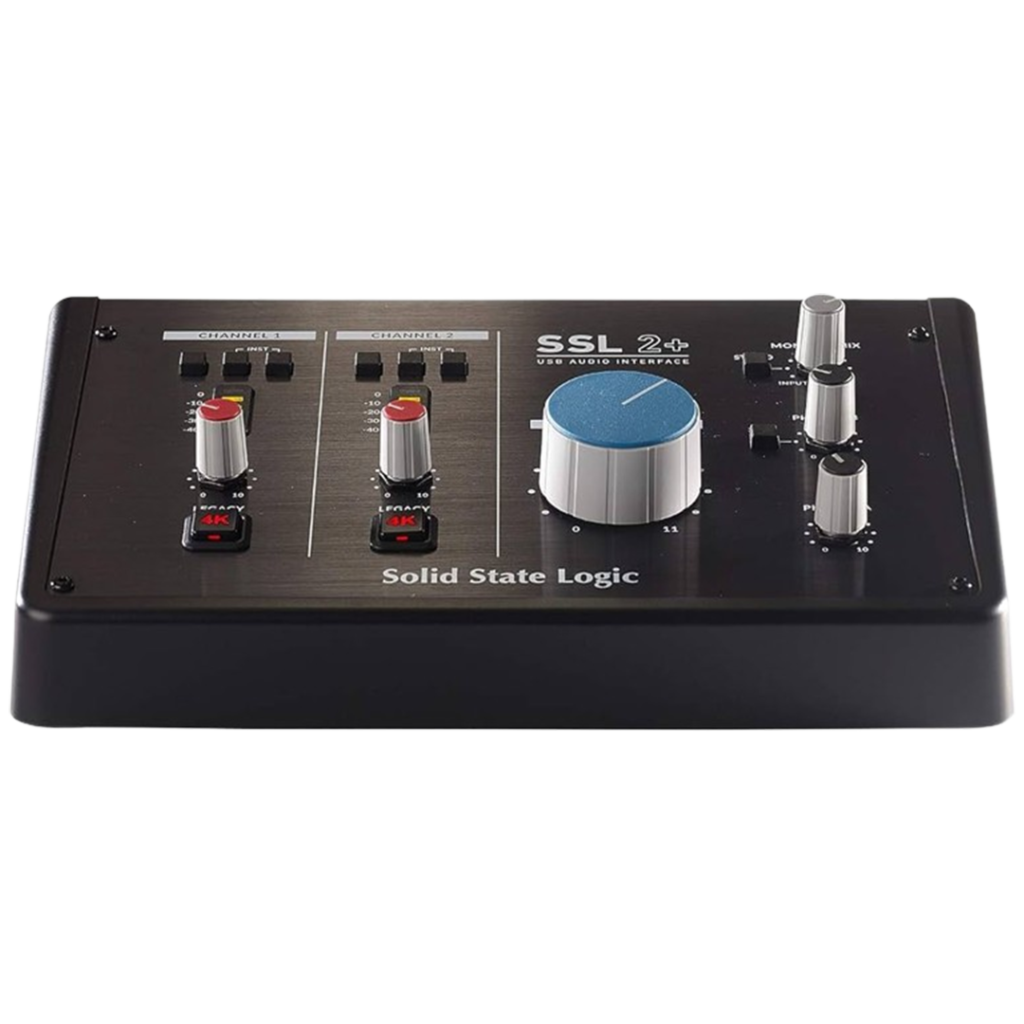

Specifications:
- Connectivity: USB 2.0
- Form Factor: Desktop
- Simultaneous I/O: 2 x 4
- Number of Preamps: 2
- Phantom Power: Yes
- A/D Resolution: 24-bit/192kHz
- Analog Inputs: 2 x XLR-1/4″ combo (mic/line/Hi-Z)
- Analog Outputs: 2 x 1/4″ TRS (L/R), 2 x Dual RCA Stereo (2 x paired out/1-4)
Who Is It For?
The SSL2+ is an ideal choice for musicians, producers, and audio engineers. They prioritize sound quality and reliability in their audio interfaces.
Its high-resolution audio capabilities and the legendary SSL sound make it a go-to for those who want to bring studio-grade recordings into their home setups. This interface is particularly suited for vocalists, podcasters, and electronic musicians.
The SSL2+ is also a fantastic option for those stepping up from entry-level interfaces, offering a noticeable improvement in audio fidelity and build quality.
The SSL2+ is one of the audio interfaces for anyone looking to make a significant impact with their recordings. It provides professional features in a compact, user-friendly package.
Best For Connectivity: Focusrite Scarlett 4i4 Gen4
The Focusrite Scarlett 4i4 Gen4 is one of the audio interfaces. It stands out because it has exceptional connectivity and performance.
Ideal for musicians and producers seeking a reliable, high-quality interface, it offers a perfect blend of versatility and audio fidelity. Compact yet powerful, it’s a top choice for home studios and mobile recording setups.
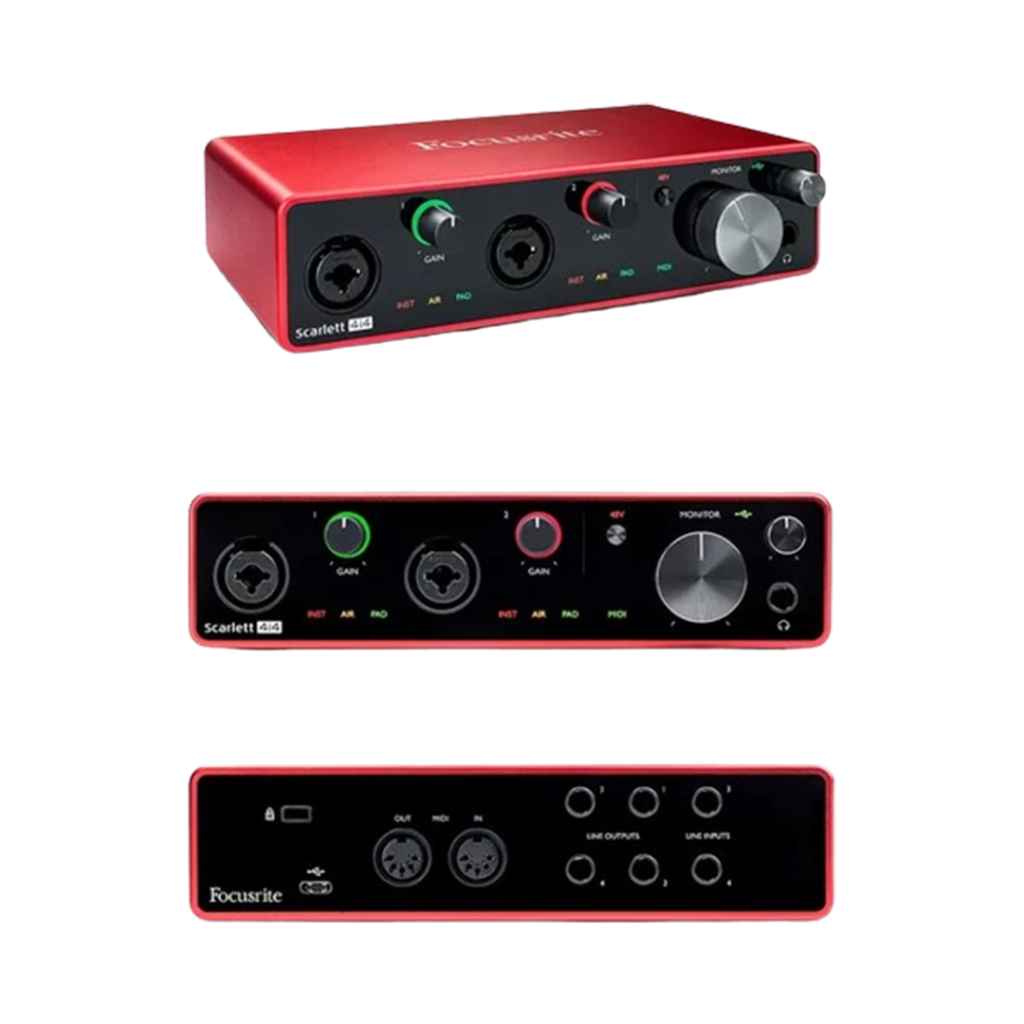

Specifications:
- Connectivity: USB-C
- Form Factor: Desktop
- Simultaneous I/O: 4 x 4
- Number of Preamps: 2 x mic, 2 x instrument
- Phantom Power: Yes
- Audio Resolution: 24-bit/192kHz
- MIDI I/O: Yes
- Weight: 2.2 pounds
Who Is It For?
The Focusrite Scarlett 4i4 Gen4 is an ideal choice for musicians, podcasters, and home studio enthusiasts. It’s one of the audio interfaces, offering both quality and flexibility.
Its high-quality preamps ensure crystal-clear recording of vocals and instruments. This makes it perfect for singer-songwriters and electronic music producers.
The interface’s 4×4 I/O configuration suits those who need to connect multiple sources simultaneously, such as microphones, guitars, and keyboards. Moreover, its MIDI I/O capability is a boon for producers. They integrate hardware synths or drum machines into their setup.
Whether you’re recording demos, producing tracks, or streaming content, the Scarlett 4i4 Gen4 offers the versatility and quality you need. It helps bring your creative visions to life.
Best For Streaming: PreSonus Studio 24c
The PreSonus Studio 24c is one of the audio interfaces. It’s a top choice for streamers and podcasters.
Compact and user-friendly, it’s designed to deliver professional-quality audio with ease. Its versatility makes it ideal for various multimedia projects, ensuring your recordings are crisp and clear.
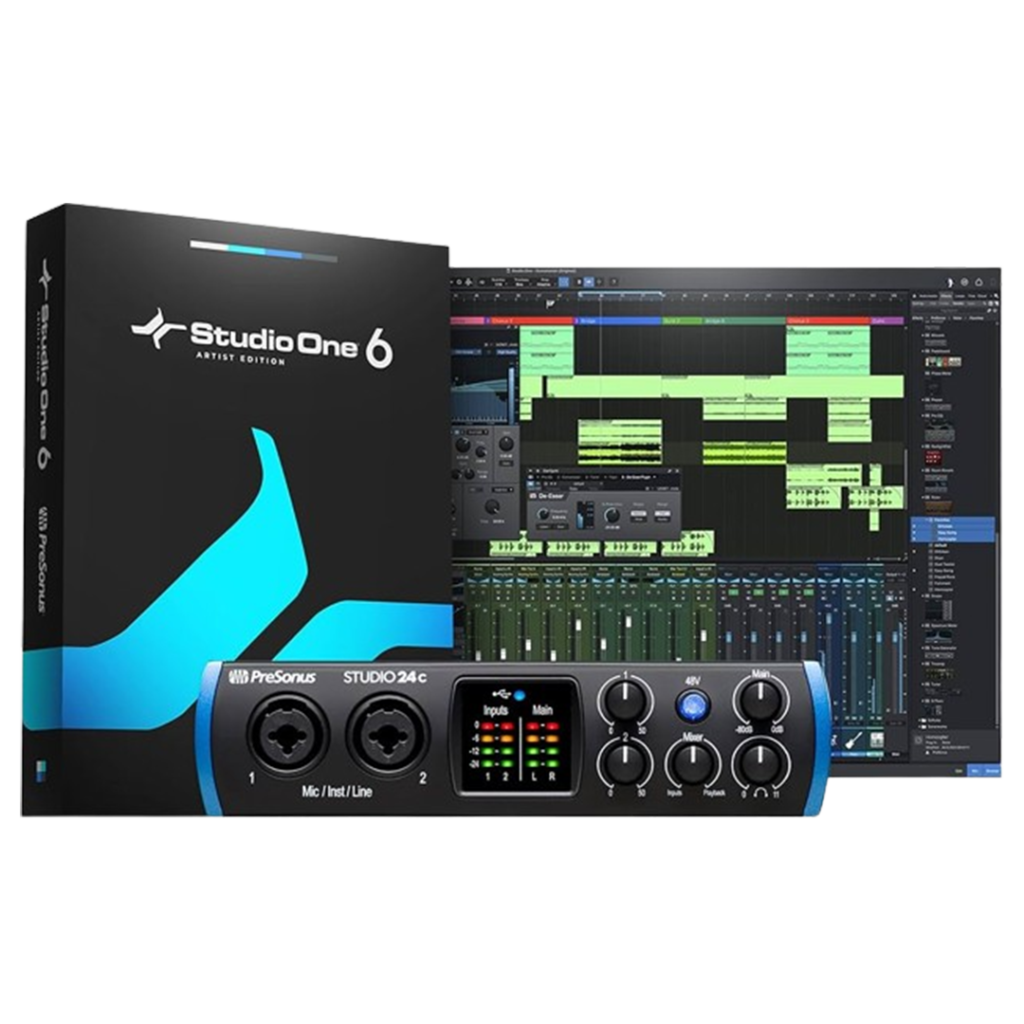

Specifications:
- USB-C Connectivity: Ensures fast and reliable connection.
- 24-bit/192kHz Resolution: For high-quality audio recording.
- 2 Mic/Instrument Inputs: With XMAX-L solid-state preamps.
- 2 Balanced ¼” TRS Main Outputs: For clear audio playback.
- MIDI I/O: Offers versatility for digital instruments.
- Low-latency Monitoring: To keep recordings in sync.
- Studio Magic Plug-in Suite: Adds value with additional software.
- Compact Design: Easy to fit in any workspace.
Who Is It For?
The PreSonus Studio 24c is an excellent choice for aspiring streamers, podcasters, and home recording enthusiasts. It is one of the audio interfaces, combining quality, affordability, and ease of use.
Its high-resolution audio capability ensures that your recordings are crystal clear. This makes it perfect for capturing vocals, acoustic instruments, and digital sounds.
The interface’s MIDI I/O adds versatility, allowing for seamless integration with digital instruments and controllers. Its user-friendly design is particularly appealing to those new to audio recording.
It provides a straightforward setup process without overwhelming users with complex features. Whether you’re streaming live sessions, recording podcasts, or laying down tracks for your next music project, the PreSonus Studio 24c offers a reliable and high-quality solution that is affordable.
Do I really need an audio interface?
Whether you’re a musician, podcaster, or producer, an audio interface is crucial for high-quality sound. It’s the bridge between your instruments, microphones, and your computer, turning analog signals into digital ones.
Without it, you can’t fully capture the richness and clarity of your audio. For anyone serious about their sound, from home studios to professional setups, having one of the best audio interfaces is essential. It’s a game-changer for recording, mixing, and producing at any level.
What types of inputs and outputs do I need?
It depends on what you plan to record. If you’re a singer-songwriter, a couple of mic inputs will suffice. Bands or those recording multiple instruments simultaneously might need more inputs.
Look for interfaces with combo jacks that can handle both XLR and 1/4″ inputs. For outputs, at least two are necessary for speakers, but you might want more for additional gear. The audio interfaces offer a variety of I/O options to suit different needs.
Do audio interfaces reduce latency?
Yes, audio interfaces do reduce latency, which is the delay between when an audio signal is input and when it’s heard. Built-in sound cards in computers often can’t handle low latency effectively, leading to a noticeable delay.
The audio interfaces are designed to minimize this delay, providing a smoother and more synchronized recording and monitoring experience. This is crucial for musicians and producers who need real-time feedback while recording or mixing.
What I Wish I Knew Before I Got The audio interfaces?
- Compatibility: Ensure the interface is compatible with your computer’s operating system and DAW.
- Inputs/Outputs: Match the number of inputs/outputs with your current and future needs. Overestimating can be as costly as underestimating.
- Latency: Lower latency is crucial for real-time monitoring. The audio interfaces offer low latency for smoother recording sessions.
- Preamps Quality: Don’t overlook the quality of preamps. They greatly impact the sound clarity, especially for vocal recordings.
- Portability: If you’re mobile, consider the size and power requirements. Some of the audio interfaces balance quality with portability.
- Budget: More expensive doesn’t always mean better. The audio interfaces strike a balance between cost and quality.
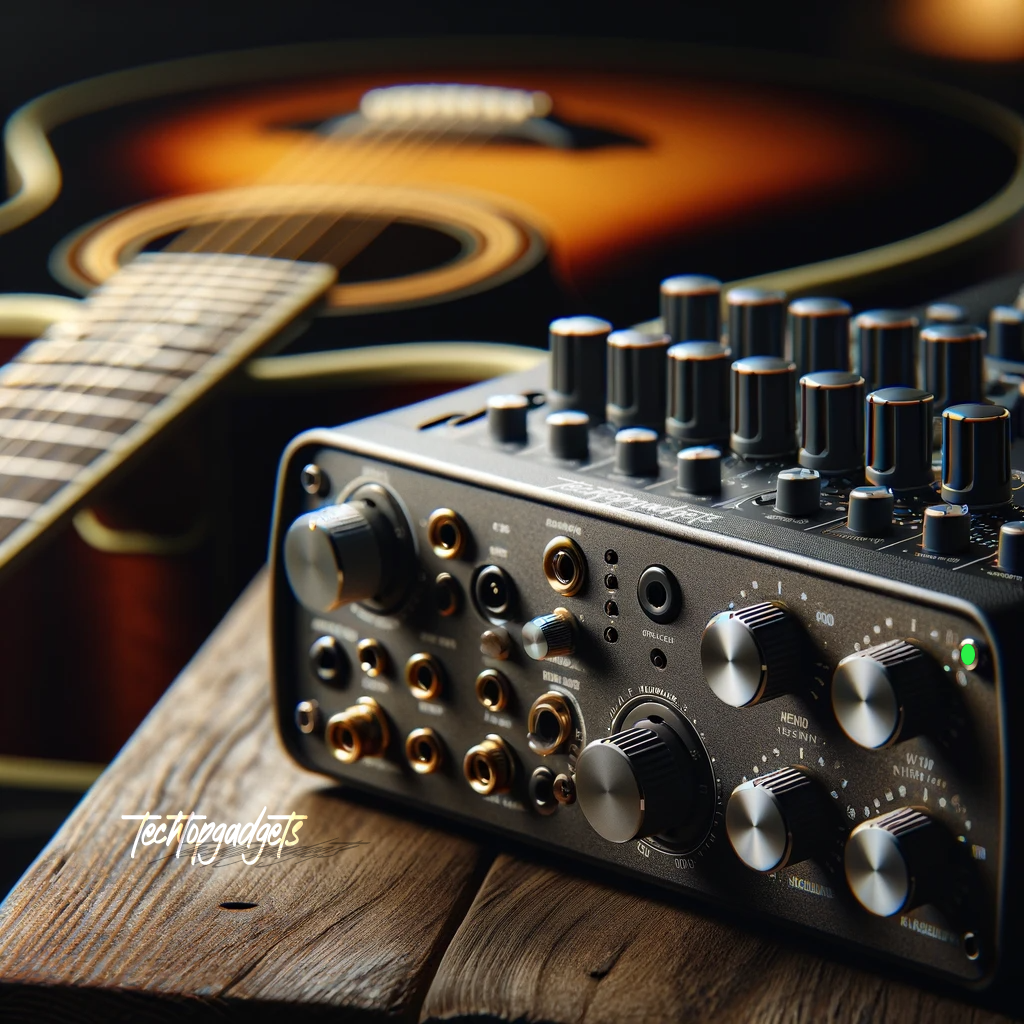
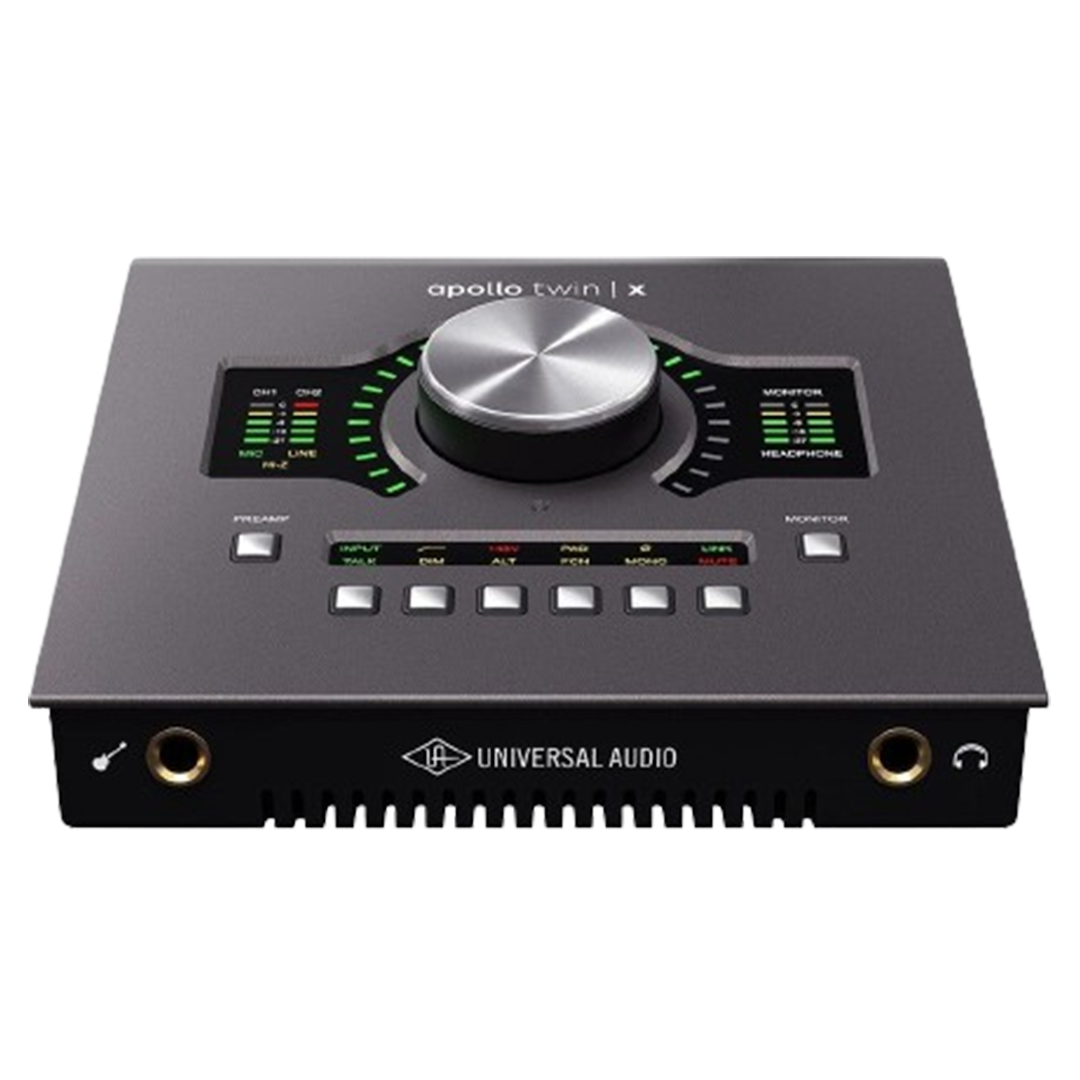
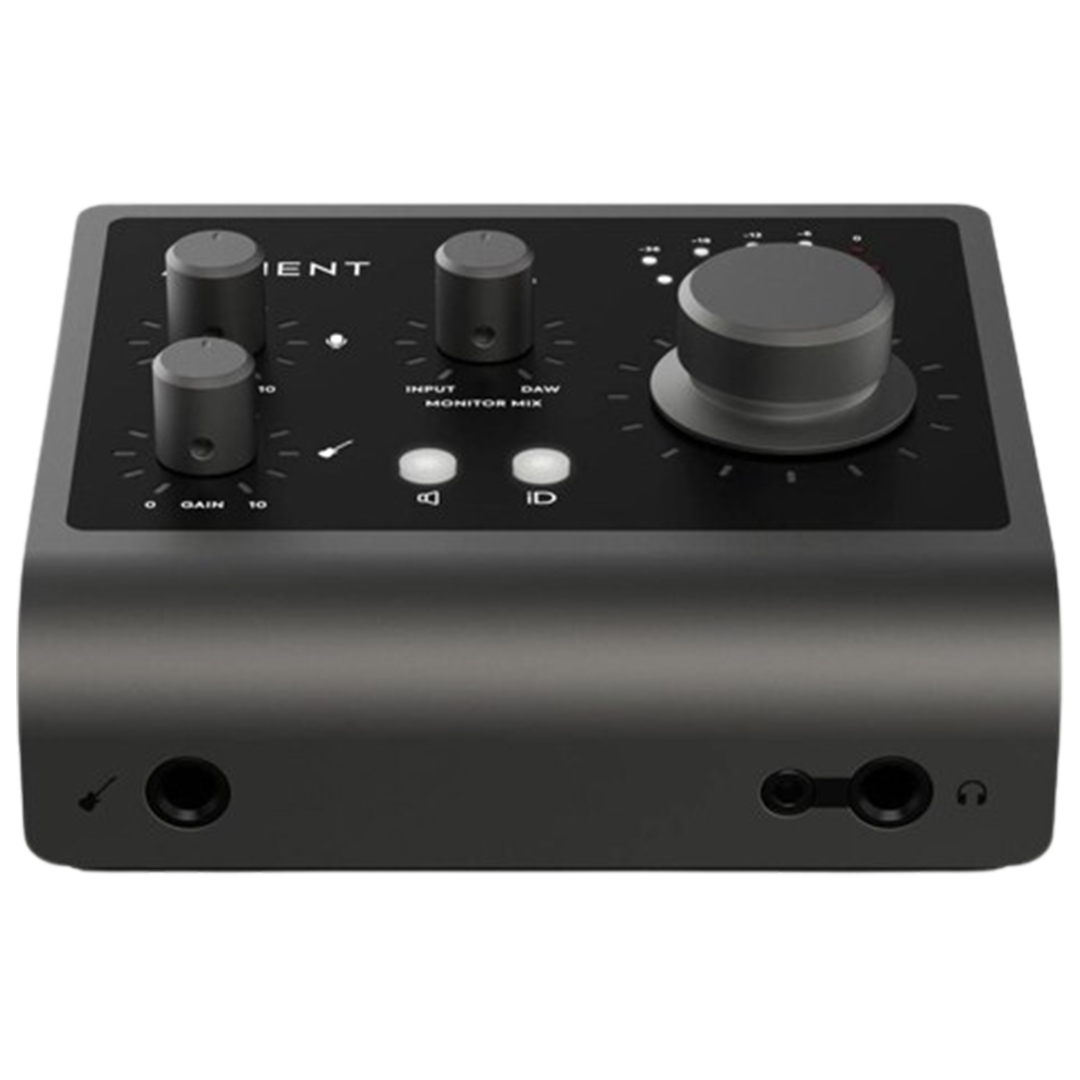
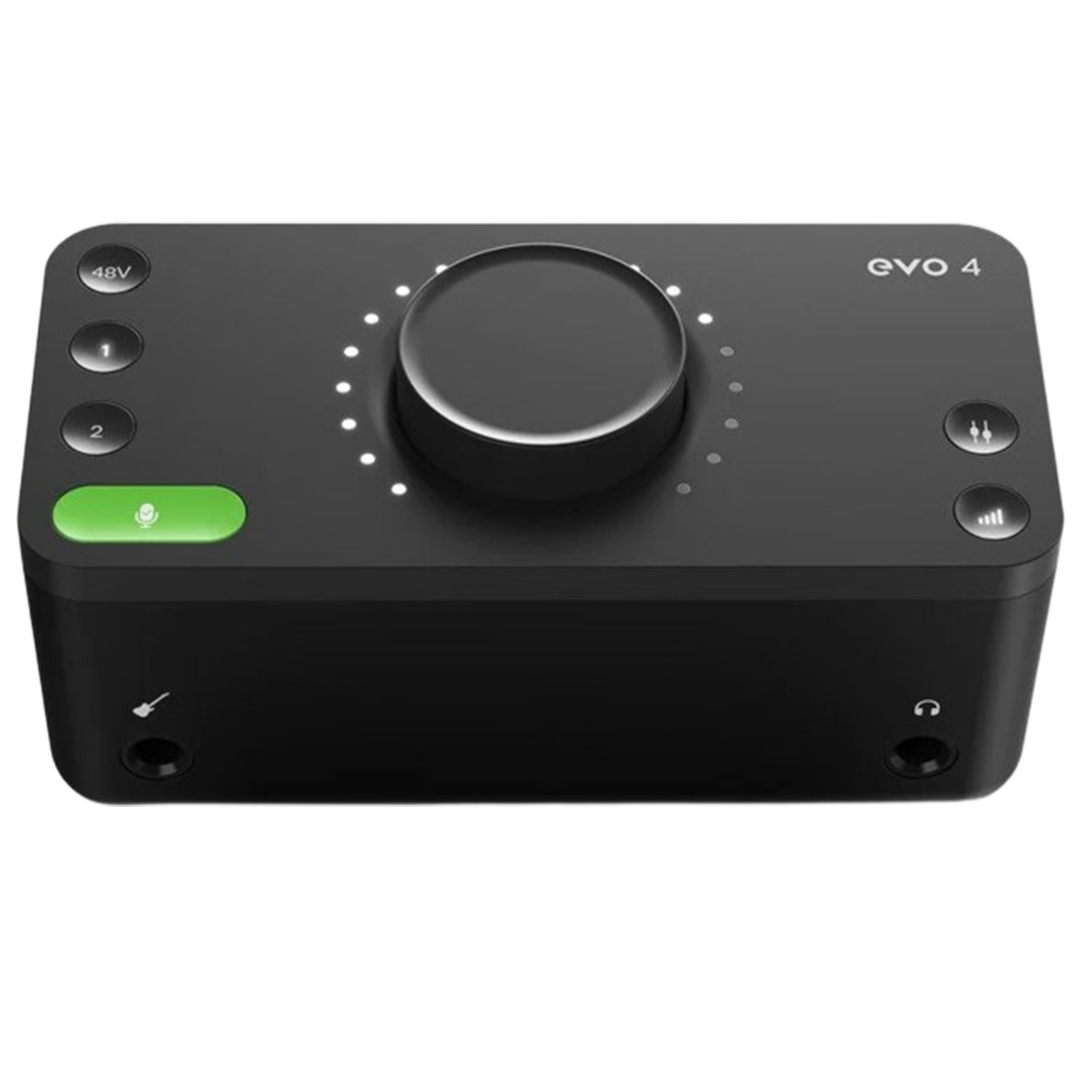
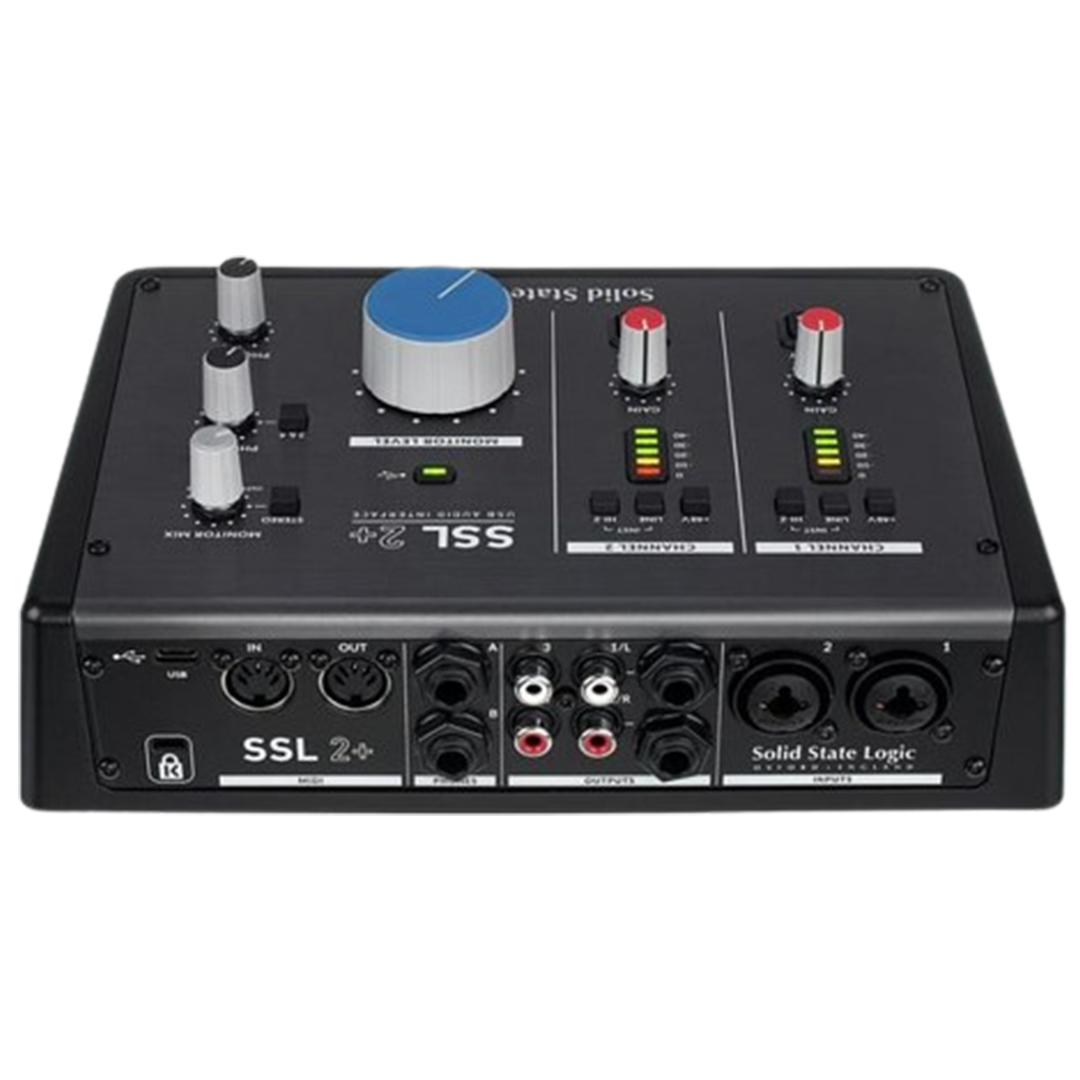
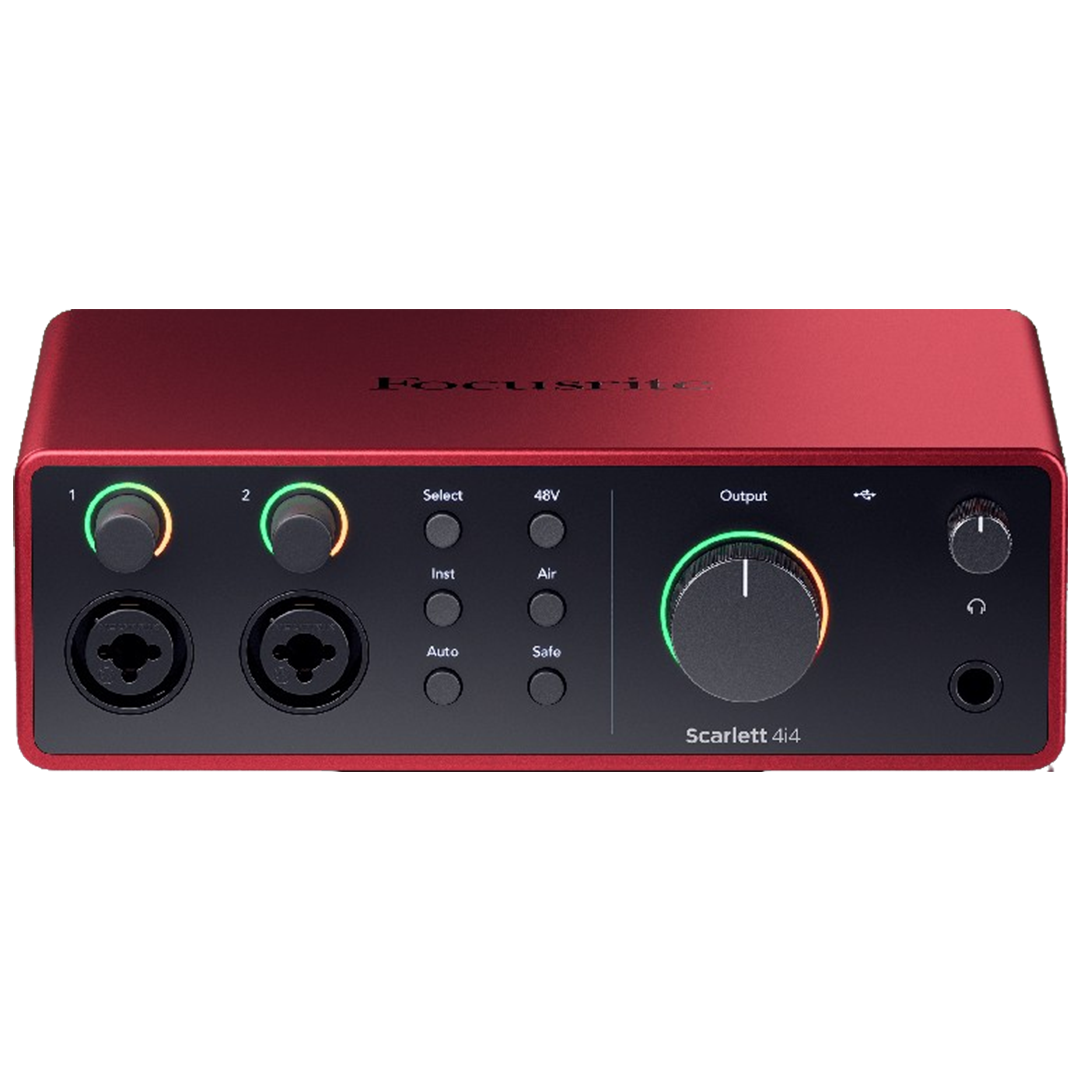
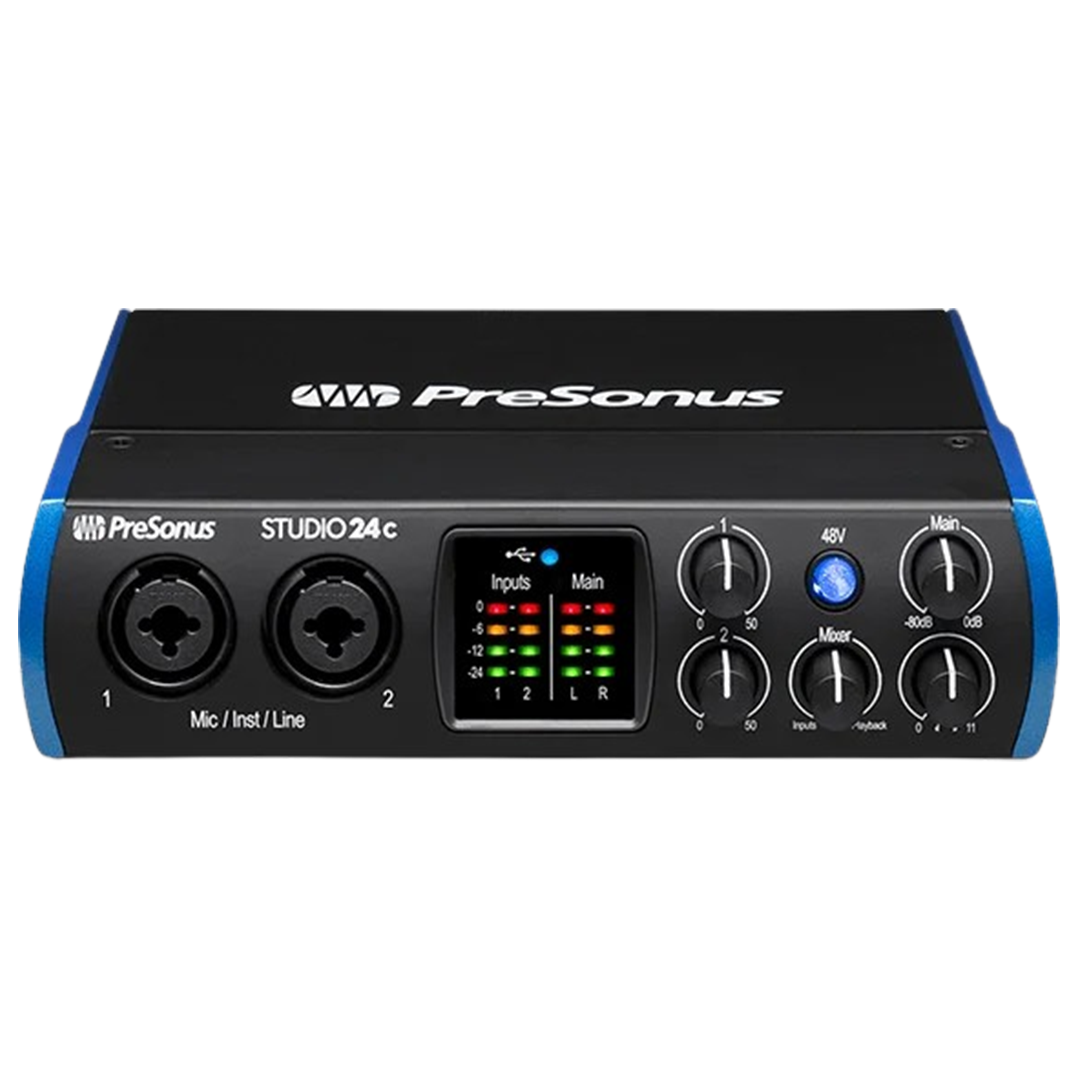
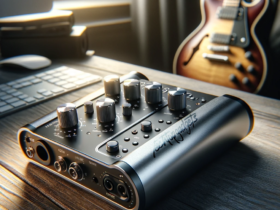
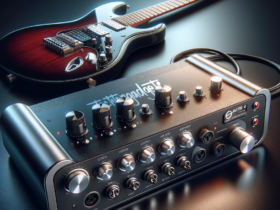
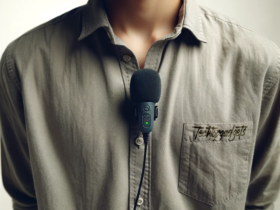
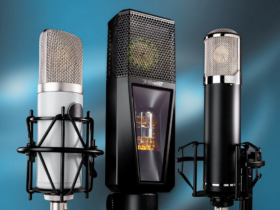
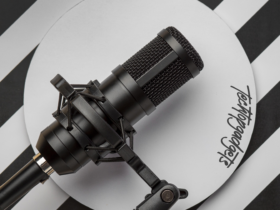

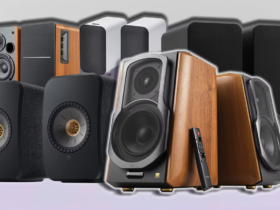
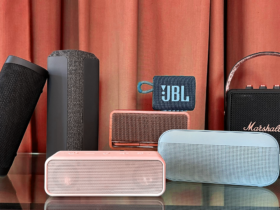







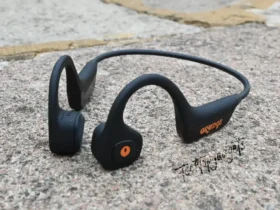
Leave a Reply